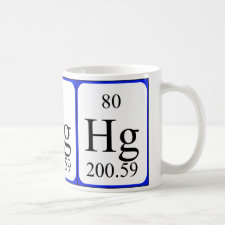
Authors: Kamel AH
Article Title: Preparation and Characterization of Innovative Selective Imprinted Polymers for the Removal of Hazardous Mercury Compounds From Aqueous Solution.
Publication date: 2013
Journal: Life Science Journal-Acta Zhengzhou University Overseas Edition
Volume: 10
Issue: (4)
Page numbers: 1657-1664.
Alternative URL: http://www.lifesciencesite.com/lsj/life1004/219_20347life1004_1657_1664.pdf
Abstract: The presence of organic and inorganic mercuric compounds in surface waters is a health concern worldwide. The present study deals with the feasibility of removal both dissolved Hg2+ and CH3Hg+ ions from aqueous solutions by using a mimicking receptor for these hazardous pollutants. A molecularly imprinted polymer (MIP), with special molecule recognition properties of 3-methyl-5-(methylthio)-4-vinylthiophene-2-carboxylic acid (VTCA) and methylmercury chloride or Hg2+, was prepared by thermal polymerization in which either CH3Hg+ or Hg2+ ions acted as the template molecule, (VCTA) acted as the functional monomer and ethylene glycol dimethacrylate (EGDMA) acted as the crosslinker. Batch adsorption studies for methylmercury and mercury adsorption were conducted to evaluate various experimental parameters such as, contact time, initial concentration of the adsorbate, adsorbent dosage, pH and temperature. Selectivity studies of mercury versus other metal ions which Cu2+, Zn2+, Pb2+ and Cd2+was reported and distribution and selectivity coefficients of these ions with respect to methylmercury and mercury were calculated here. The findings seem to be important for application of the introduced mimicking receptor as an efficient new nonconventional adsorbent in hazardous pollutants removal technology.
Template and target information: mercury ion, methylmercury ion, Hg(II), CH3Hg+
Author keywords: Methylmercury, removal, Mimicking receptor, molecular imprinting polymer, Hazardous waste



Join the Society for Molecular Imprinting

New items RSS feed
Sign-up for e-mail updates:
Choose between receiving an occasional newsletter or more frequent e-mail alerts.
Click here to go to the sign-up page.
Is your name elemental or peptidic? Enter your name and find out by clicking either of the buttons below!
Other products you may like:
 MIPdatabase
MIPdatabase









